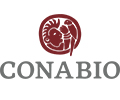|
 |
Directorio de especialistas en manglares de México |
|
regresar
|
Toda la información publicada en el presente directorio es responsabilidad total y absoluta de cada una de las personas registradas, quienes dieron de alta
dicha información sabiendo que ésta es pública.
|
Datos generalesNombre: Eduardo Apellido Paterno: NájeraApellido Materno: HillmanGrado Académico: DoctoradoProfesion: ConservaciónNombre de la Institución: WWF MéxicoTipo Institución: Docencia - InvestigaciónDepartamento / Laboratorio: Programa OcéanosCorreo electrónico: enajera@wwfmex.orgCalle y No: Av. Insurgentes Sur no. 1216, int. 702-703-704 Colonia: Del ValleMunicipio ó Delegacion: Alcaldía Benito JuarezCiudad: CDMXEstado: CDMXPaís: MexicoCódigo Postal: 03100Teléfono: 6462107224Fax:
Sitio de estudio
Fecha: 2018
Sistema Lagunar: Golfo de California
Estados: Baja California Sur, Sinaloa y Sonora
Municipios:
Tema Principal de Estudio: Conservación
Segundo Tema de Estudio: Manejo
Resumen: Mangroves are considered ideal ecosystems for Blue Carbon projects. However, because of their short stature, some mangroves (‘scrub’ mangroves, less than 2 m) do not fulfil the current definition of ‘forests’, which makes them ineligible for emission reduction programmes such as REDD . Short stature mangroves can be the dominant form of mangroves in arid and nutrient-poor landscapes, and emissions from their deforestation and degradation could be substantial. Here, we describe a Blue Carbon project in the Gulf of California, Mexico, to illustrate that projects that avoid emissions from deforestation and degradation could provide financial resources to protect mangroves that cannot be included in other emission reduction programmes. The goal of the project is to protect 16 058 ha of mangroves through conservation concessions from the Mexican Federal Government. The cumulative avoided emissions of the project are 2.84 million Mg CO2 over 100 years, valued at $US 426 000 per year (US$15 per Mg CO2 in the California market). The funds could be used for community-based projects that will improve mangrove management, such as surveillance, eradication of invasive species, rehabilitation after tropical storms and environmental education. The strong institutional support, secure financial status, community engagement and clear project boundaries provide favourable conditions to implement this Blue Carbon project. Financial resources from Blue Carbon projects, even in mangroves of short stature, can provide substantial resources to enhance community resilience and mangrove protection.
Bibliografía
Autor(es): M. F. Adame, E. Najera, C. E. Lovelock y C. J. Brown
Año: 2018
Tipo de publicación: Revista
Titulo de la Publicacion: Avoided emissions and conservation of scrub mangroves: potential for a Blue Carbon project in the Gulf of California, Mexico
Titulo de la Subpublicación:
Editorial, País, Página: Biology Letters
Número, Volumen, Páginas / Editores Compiladores / ISBN ISSN /: Adame MF, Najera E,
Lovelock CE, Brown CJ. 2018 Avoided emissions and conservation of scrub mangroves: potential for a Blue Carbon project in the Gulf of California, Mexico. Biol. Lett. 14: 20180400. http://dx.doi.org/10.1098/rsbl.2018.0400